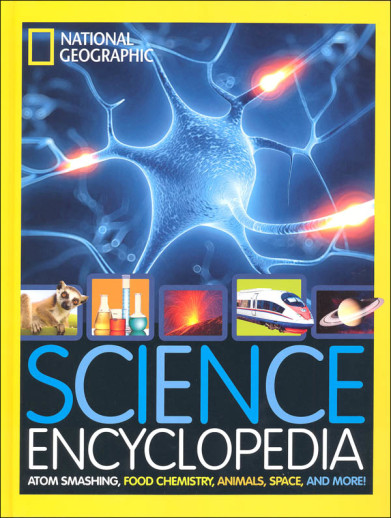We use cookies to make your experience better. To comply with the new e-Privacy directive, we need to ask for your consent to set the cookies. Learn more.
Science Encyclopedia
My children loved to get lost in a good encyclopedia. Maybe that sounds odd today, but I am still a firm believer in having accessible, quality books available for children to read when curiosity peaks. Lavishly illustrated and divided into two parts, Physical and Life Science, this resource is jam packed with information, fun facts, hands-on activities and intermingled science related jokes. The introductory section explains what science is, how scientists work and the scientific theory before describing the difference between physical and life science and going deeper into respective areas. Evolutionary content.
Physical science is separated into four sections: matter, forces and machines, energy, and electronics. Subtopics are presented in a 2-page spread that includes photographs and colorful graphics, clearly explained textual information, historical or unique fun facts, activities or jokes. A sampling of topics includes chemistry basics, organic chemistry, noble gases, gravity, friction, radio waves, satellites, nuclear power, sound waves and more.
Life Science is separated into four sections: the universe, life on earth, human body and planet earth. Subtopics are presented similarly to the physical science section. A sampling of topics includes the big bang, solar system, classification of living things, microbes, reptiles, ancient medicine, genes, reproduction and growth, volcanoes, earthquakes, the earth's age, rocks and minerals, biomes conservationism, and more. Includes websites, books and film recommendations, a glossary, and index. An excellent resource for your home or school library. 303 pgs, hc. ~ Deanne
Food chemistry, atom crashing, wave power, and robots! These are just a few of the topics covered in this fantastic new science encyclopedia, which presents a comprehensive overview of physical and life sciences from A to Z. Super smart and kid-friendly, it's packed with full-color photographs, weird but true facts, amazing statistics, do-it-yourself experiments, plus profiles of scientists and National Geographic's explorers who rock the world of science. Keep up with the changes happening all around us with this stellar science reference book.
| Product Format: | Hardcover |
|---|---|
| Brand: | National Geographic |
| Grades: | 3-7 |
| ISBN: | 9781426325427 |
| Length in Inches: | 12.25 |
| Width in Inches: | 9.5 |
| Height in Inches: | 1 |
| Weight in Pounds: | 3.75 |

